
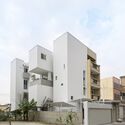
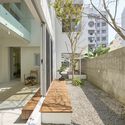
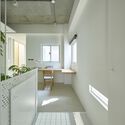


- Area:
338 m²
Year:
2024
Manufacturers: Carl Hansen and Sons, MUJI, Republic of Fritz Hansen
-
Principal Architect:
Ray Chang

Text description provided by the architects. The project deconstructs architecture to integrate with nature. The houses on the long street are transformed into five staggered volumes with spaces between them. Horizontal and vertical planes formulate floors of different levels, allowing natural elements to penetrate the building. The imagery of valleys is combined with the traditional Taiwanese courtyard, forming an architecture that adapts to wind and sunlight.



The key points of our design are:
- Using deconstructive techniques to respond to the natural environment and create favorable microclimates
- Images of valleys combined with a traditional courtyard, creating a harmony of architecture in nature
- In spaces enveloped by nature, one can fully experience the natural elements of the home


The project is located among the common stand-alone buildings in Taiwan: on a long and narrow site with windows at the front and back only, and closely attached to adjacent buildings, disconnecting it from the outside environment. Considering the cold and humid northeast wind it faces, the design mitigates climatic and physical disadvantages for comfortable living.

The project attempts to propose new solutions for adjacent independent buildings through “deconstruction”, reversing the traditional layout of living spaces placed at both ends of the house. By inserting different spaces and levels into nature and breaking the concrete boxes with semi-outdoor spaces, it creates a new urban residential typology and expands the possibility for residents to connect with nature.

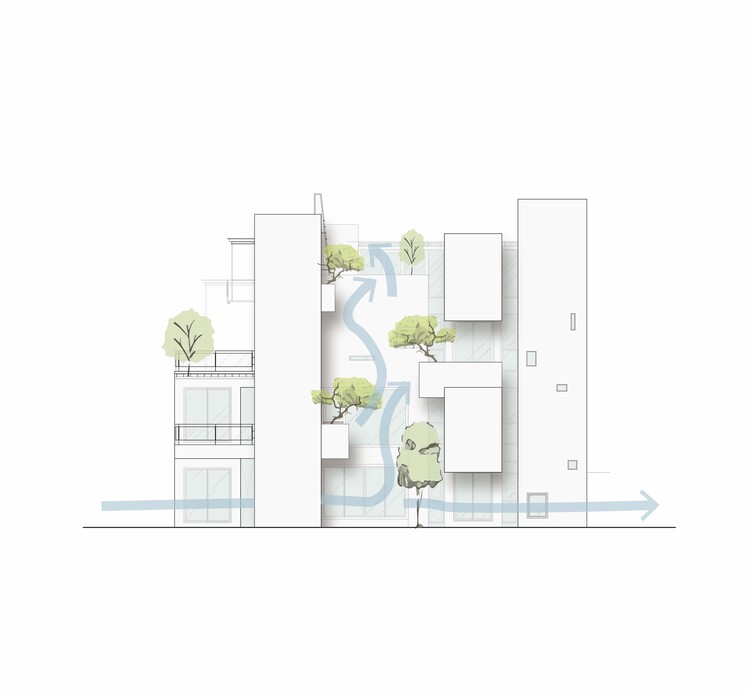

Deconstructing the architecture of the house. In response to the climate and the surrounding physical environment, the stand-alone building is transformed into five non-aligned structures. The vertical circulation is placed in the first building facing the northeast wind, while the living spaces are pushed back, reducing the adverse effects of cold wind and humidity. The height of the buildings on the southwest side is reduced to accommodate the southwest wind. By narrowing the wind passage and accelerating the wind speed, it can penetrate through the courtyard and follow the buildings and trees upward, or enter inside through the gaps between the buildings. This creates a favorable indoor microclimate and a comfortable experience. One can fully enjoy the outdoor nature even while staying indoors.

The oriental-style garden where the decor changes as you move around. By merging the imagery of valleys with the traditional concept of a courtyard, the plane receiving wind and human activities is altered vertically. The balconies that gradually recede become valleys for wind, vegetation and habitats, including humans. Inside, the voids echo the verticality of the valley, allowing the senses to have a visual connection with nature.

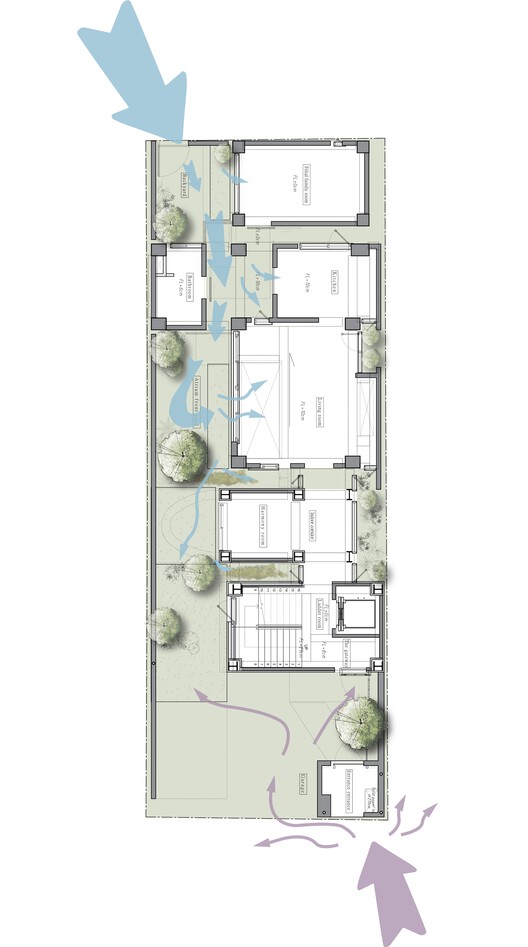
On the plans, setbacks and excavations create permeable spaces, while nature simultaneously infiltrates the interior through horizontal and vertical dimensions. This creates a new relationship between architecture and nature, allowing for perspectives from above, below and at eye level to redefine the living boundaries between inside and out. Deconstruction techniques aim to adapt to site conditions and reshape the space for a multi-generational lifestyle.

In deconstructed residential architecture, space is defined by structures, interstices and exterior elements to create distances and boundaries. Users can navigate the different spaces and nooks generated by the non-aligned layers of the building to develop different uses and scenarios. This creates spaces suitable for gatherings or isolation, characterized by a state that is both connected and detached, breaking with conventional ways of living and dwelling. The design attempts to integrate abstract sensibility and nature into the rational composition of architecture.

The service functions are mainly located in the 1st and 4th buildings, while the 2nd and 3rd buildings distribute spaces such as the tea room, study, dining room and reading desks near the windows on different floors. This allows the living spaces to be woven into the middle of the service areas, making balanced use of the elongated space. The rooms located in the final building can enjoy the comfortable southwest wind in privacy with an interior view of the valley. Various trees are planted on the balconies of the different levels, introducing different variations of natural colors reminiscent of the valleys and highlighting the natural flow that arises from the different heights inside and outside.

#Valley #House #Soar #Design #Studio #Ray #Architects